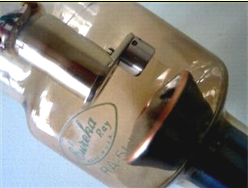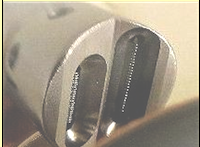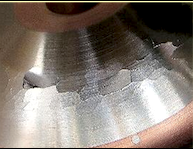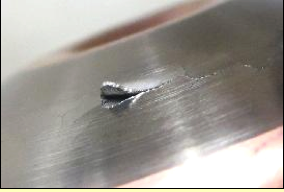Early Eureka Rotating Anode Tube
Ref. K2





The rotating anode of this tube is of the transitional type between the cylindrical anode of the earliest rotating anode tube by Bouwers (the Philips Rotalix of the late twenties), and the disc anode of later designs.
With a weight of 3.5 lbs (1.6 Kg), mostly due to the massive anode, this double focus tube is very close in conception and design, and contemporary to the Early CRT rotating anode tube by GE, but smaller in size with a maximum diameter of 3.5”(9 cm). It probably dates to the late thirties or early forties.
A problem which seems inherent to this type of rotating anode is the risk of cracks and possible peeling of the tungsten surface bonded to the massive copper mass of the anode structure (See the lowest two pictures right) This risk is confirmed in the Memorial Issue of the Machlett Cathode Press, 1955, p. 52, “.…Tungsten facing, bonded to copper massive enough to conduct away the great heat of high power operation, would sometimes peel off under loading”.
The pictures below, comparing the anode type of this tube to a disc-type anode, are equally adapted from the Memorial Issue of the Machlett Cathode Press.